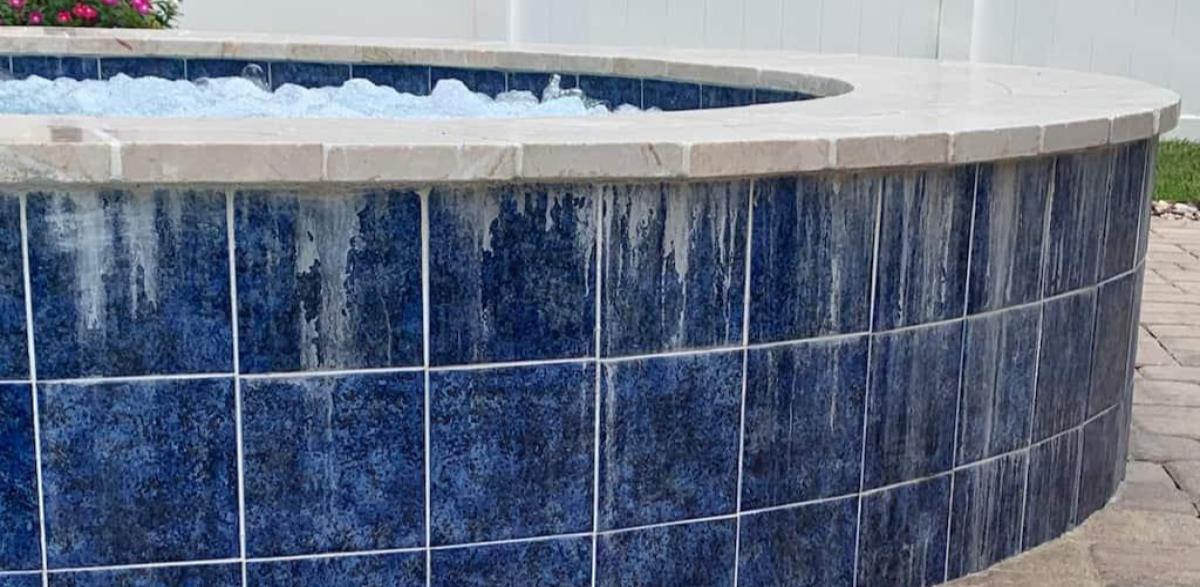Too Much Calcium in the Pool: How to Lower Calcium Hardness Levels

Calcium hardness (CH) is often the most overlooked aspect of pool chemistry. However, too much calcium in a pool can impact the health and longevity of equipment and the pool’s surface.
Ideal calcium hardness should be between 250 to 500 ppm. But, what exactly causes high calcium hardness levels and how can we lower it within the recommended ranges?
What Causes High Calcium Hardness in Pools
To be very simple, calcium hardness is increased by adding calcium to the pool. But, if you aren’t adding calcium chloride yourself but it is still increasing, you might be adding calcium without even knowing it!
Fill Water
It’s not uncommon to top off your pool water with a tap or a hose. But, do you know the calcium levels in the water?
There are certain areas in the United States, particularly in the Southwest, and other parts of the world that have high calcium levels in their tap water. This is known as hard water. Filling up the pool with hard water will increase calcium hardness over time.
Testing the water source can help set chemistry expectations when adding it. While you’re at it, testing the total alkalinity (TA) and pH levels of your tap water is recommended as well.
Use of Calcium Hypochlorite (Cal-Hypo)
Cal hypo is a very common type of chlorine used to sanitize water. It’s also widely used to shock a pool due to its fast-dissolving granular form.
However, when cal-hypo dissolves, they release both chlorine and calcium into the water. For pools that already have a tendency toward high calcium hardness living in these hard water areas, it’s best to choose alternative methods of sanitizing.
Water Evaporation
Losing pool water to evaporation is extremely common. However, as water evaporates from the pool, calcium stays behind, which adds to a higher concentration in the remaining water.
If you are consistently adding fresh water to compensate for evaporation without considering calcium levels (including in the fill water itself!), this can result in an increase in calcium hardness over time.
What Does High Calcium Hardness Levels Do to a Pool?
Water that has too much calcium in it will try to deposit it somewhere, and that is most commonly on pool surfaces and equipment.
This can plug pool filters and piping which reduces overall circulation and can form crusty white scaling deposits on a pool’s surface. You might also start to notice your pool water becoming more cloudy
How to Decrease Calcium Hardness
There is only one proven solution to lower calcium hardness, and that is with a partial drain and refill of fresh water.
You may see calcium reducers or other chemical methods to reduce the levels, but those are merely band-aid solutions and not addressing the actual issue. In other words, they are a waste of time and money.
Managing a Pool With High Calcium
The areas mentioned above that have hard water might not have the ability to properly maintain their calcium levels in the pool. Constantly draining and refilling can be time-consuming and expensive.
Using a water softener or a hose filter can help decrease the amount of calcium that goes into the water when refilling.
You can also maintain higher calcium levels by making sure your calcium saturation index (CSI) is within an acceptable range.
This is essentially a measurement of how over-saturated or under-saturated the water is with calcium. It primarily looks at pH, total alkalinity, and calcium hardness levels. Some handy calculators can give you a good idea of what your saturation index is.
Keeping Calcium Balanced
Understanding the causes of high calcium levels and taking corrective measures will ensure your pool remains a healthy and enjoyable space.
Maintaining these levels will be beneficial for both the pool itself and the pool owner!
As always, regular testing and maintenance goes a long way.

